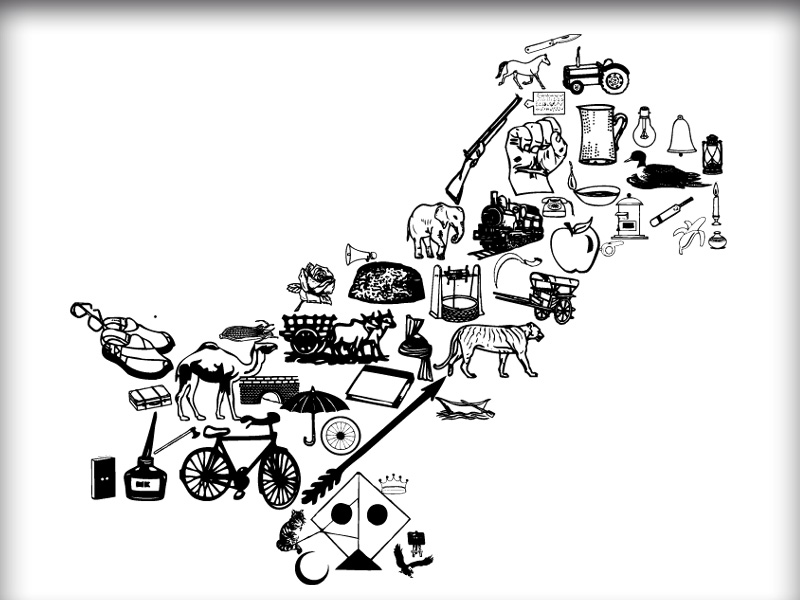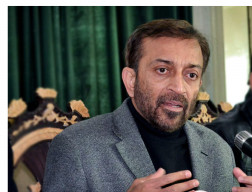
ISLAMABAD: When it comes to education, the manifestos of most political parties have two things in common: that they all pledge to move mountains to address Pakistan’s education emergency, but offer few plans as to how they intend to do this.
Increasing the GDP
Pakistan People’s Party (PPP) has yet again pledged to push the budgetary allocation for education to 4.5 percent of the GDP if it gets another term. It is important to note that during the last five years of the PPP-led coalition government, the GDP allocation continued to decline from 2.9 percent in 2008 to 2.2 percent in 2012.
The Muttahida Qaumi Movement (MQM), the off and on ally of the PPP, claims that budgetary allocation for education would be raised from 2.2 percent to 5 percent of the GDP and promised an outlay of 20 percent for education in the provincial budget.
Similarly, Pakistan Tehreek-e-Insaf (PTI) also committed to increase education spending from 2.2 percent to 5 percent of the GDP.
However, the Pakistan Muslim League-Nawaz (PML-N) has vowed to increase the budget from 2 to 4 percent of GDP by 2018, while Pakistan Muslim League Functional (PML-F) has inserted just one line in its manifesto indicating an education budget increase from 2 to 6 percent.
Literacy rate
The PPP has pledged to raise the adult literacy rate from the current 54 percent to 85 percent.
Meanwhile, MQM announced that steps would be taken to provide free and compulsory education to children from 5 to16 years in order to boost the literacy rate.
PTI says their target would be to help illiterate adults in the 15-30 age group achieve functional literacy.
JI claims the literacy rate will reach 100 percent by the end of their tenure, as they will provide free of cost education till grade 10, a more ambitious goal than the PML-N’s target of 80 percent.
Curriculum reform
The PPP plans to carry out comprehensive curriculum and academic reform and, for the first time, review and reform language policy to stress both mother tongue instruction as well as the appropriate introduction of national and international languages.
JI vows to promote all languages, along with Urdu, as a medium of instructions in academics. PTI mentioned that English and Urdu will be taught as compulsory subjects from grade 1 to 12. However, the manifestos of MQM, PML-N and PML-F are silent on curriculum-related points.
An important point only mentioned by PPP and ANP is to remove hate and violence-related material and unwarranted glorification of wars from curriculums.
Eradication of multiple education systems
Disparity in the system of education has been another main reason for Pakistan’s low literacy rate and high drop-out rate.
The PPP has promised education for all, to ‘eliminate class divides, gender disparities, poverty and unemployment.’ They have not, however, mentioned Artcile 25-A (right to education), which places the responsibility of providing free, compulsory education up to a certain level, upon the state.
While the PTI, PML-N and PML-F have not mentioned the elimination of a dual system of education, they have all pledged uniform admission policies in each province and have vowed to establish better schools in the public sector, all fully equipped.
MQM and JI may have discussed the elimination of dual standards of education system in their manifestos, but have given no details as to how this will be implemented.
Girls’ education
PTI promised to focus on girls’ education, and resolved to increase number of schools for girls.
The PML-N is determined to achieve the target of 100 percent enrollment by 2020, in line with Article 25-A.
MQM misses this important point while PML-F claims to ‘encourage girls’ education’. Moreover, JI vows to provide ‘respectful opportunities to females from primary to higher education level.’
PPP claims it will eliminate gender disparities in education at the primary and secondary level.
Madrassa education
MQM says it will bring seminaries at par with the mainstream system of education. Meanwhile, JI promise that seminaries will also provide education in other important subjects such as Maths and English, adding that teaching of Quran and Hadith will be made compulsory till intermediate.
The PPP says it will initiate seminaries’ reforms with the help of seminaries councils to modernise their education systems.
The PTI also aims at improving the seminaries’ education by teaching mainstream subjects as well. The PML-N, ANP and PML-F are silent on this issue.
Published in The Express Tribune, May 2nd, 2013.
COMMENTS (8)
Comments are moderated and generally will be posted if they are on-topic and not abusive.
For more information, please see our Comments FAQ



































































I don't want to sound hopeless but I'm quite sure, nothing is going to happen in next 5 years as well. Unless this nation gives a chance to IK and we see what he can do for Pak.
Some NGOs are taking matters into their own hands with awesome results. Check out The Citizens Foundation, who have over 900 schools and 115,000 children !
Educational emergency and equall curriculum in all stares beside each Provinnce local language...offer lunch at school and also modernize the schools system.
No matter who says what but Education is an important factor in Pakistan which should be taken seriously by the Govt, Literacy rate can play a vital role in the development of the country
For me, there is no difference between Politicsl Leaders and Snake Charmers.
Now to come into power all political leaders are luring the voters, but once some one will come into power, they will never turn back to the voters.
I know how these political leaders are. This is the reason that I have decided not to vote for any one in this election.
Tarazo is missing in the picture. ET you are biased.
All these leaders are telling what the people want to hear. If I were a candidate I would also increase the education budget from 2 to 10%, healthcare by several fold, and power-generation by another huge amount while alleviating all poverty. I am not corrupt hence by a magic wand everybody would become corruption free when I come to power. I believe in more defense budget and my budget would be several hundred % more than the current budget. I am not going to cut any expenses (like huge army) from the budget. To economists it is all talk and talk is cheap. Nobody is telling where would the money come from and what would happen to defense budget? Not even the richest countries of the world have such huge armies and nuclear weapons both at the same time.
The are fake medicine men, selling potions of promises they don't intend to keep. If we have not learnt this lesson then we never will. They send their own children to Schools and Universities in Europe and USA and then their offspring come back to rule over us by lying in our faces. How hollow can one get???